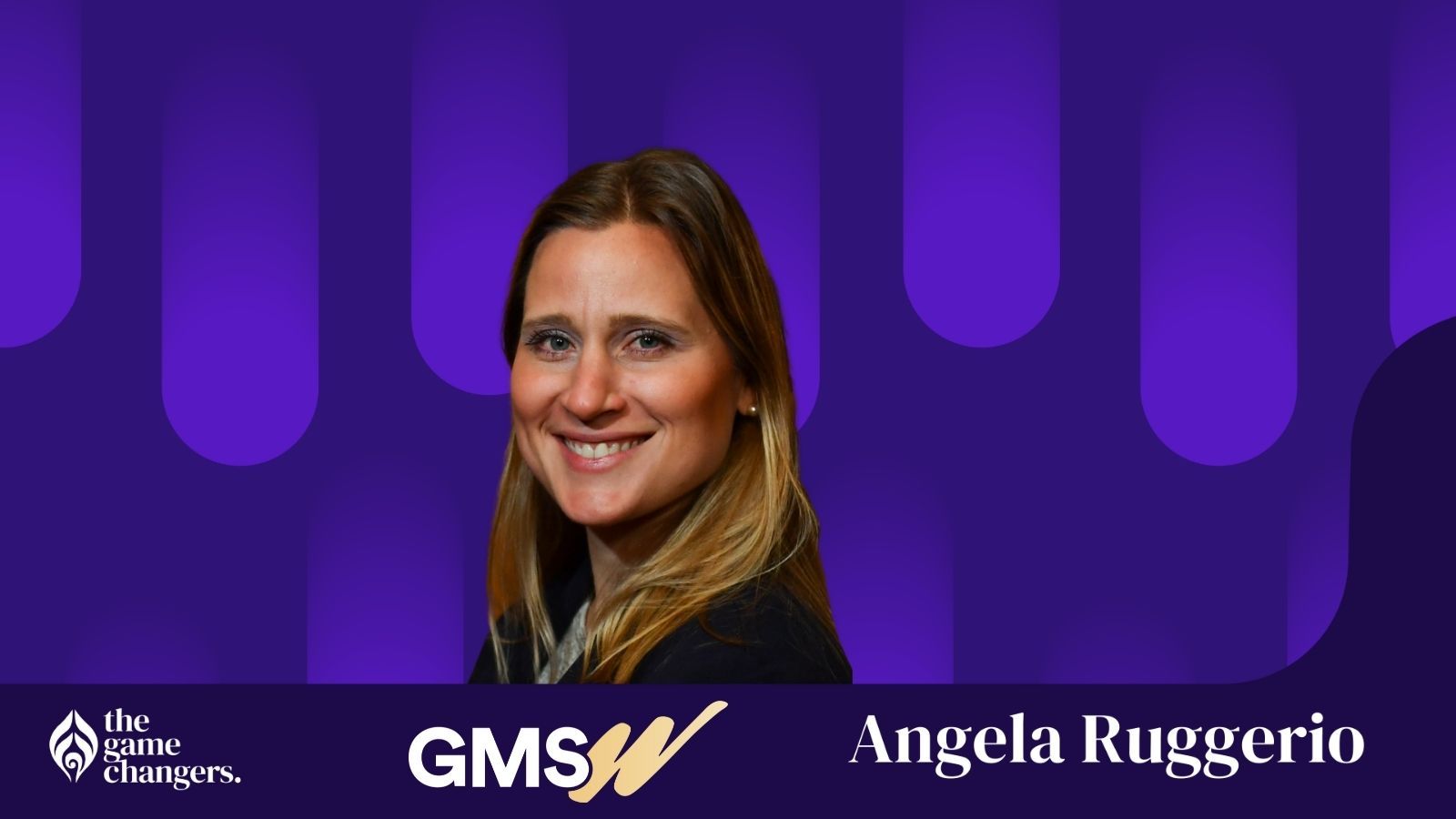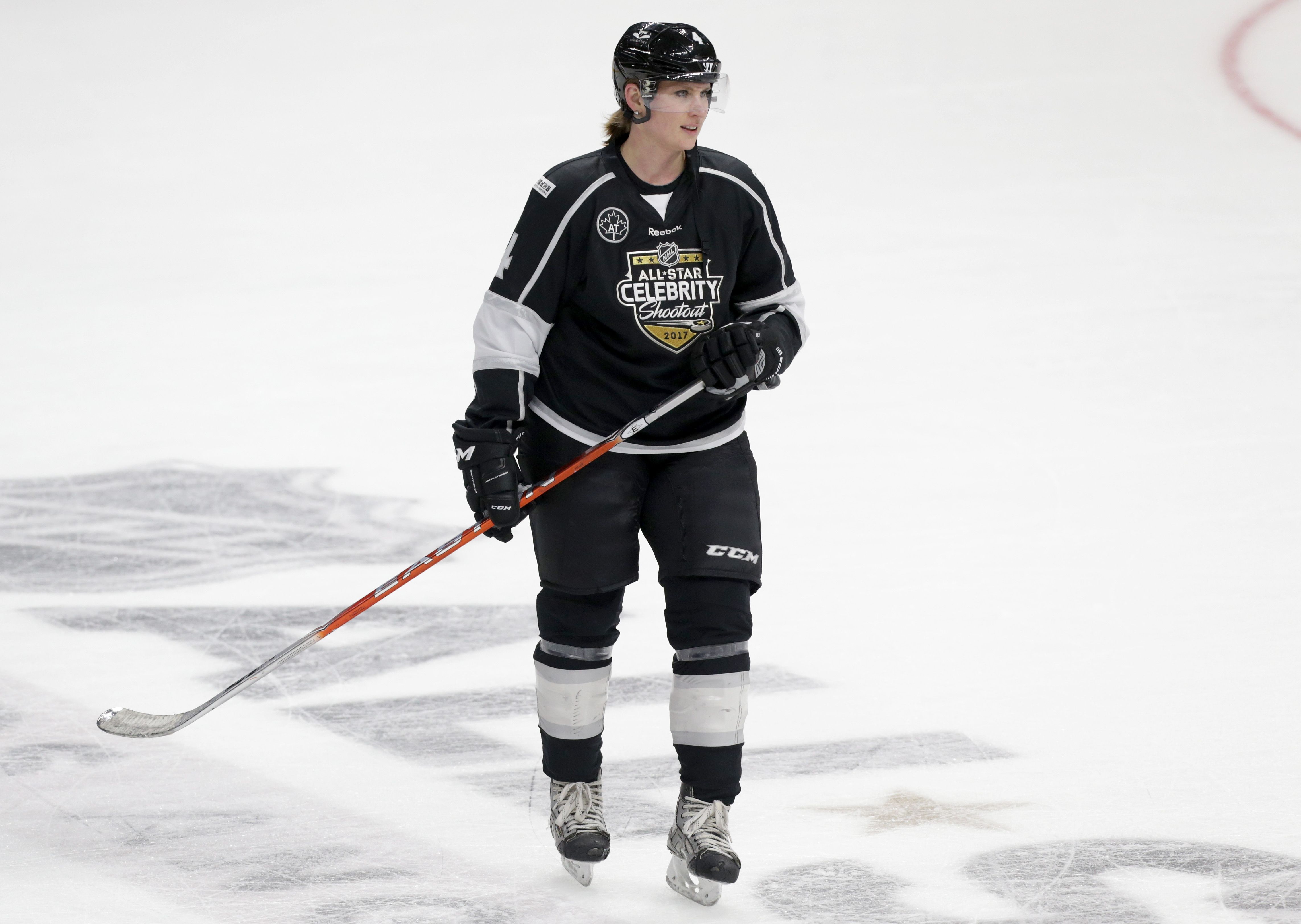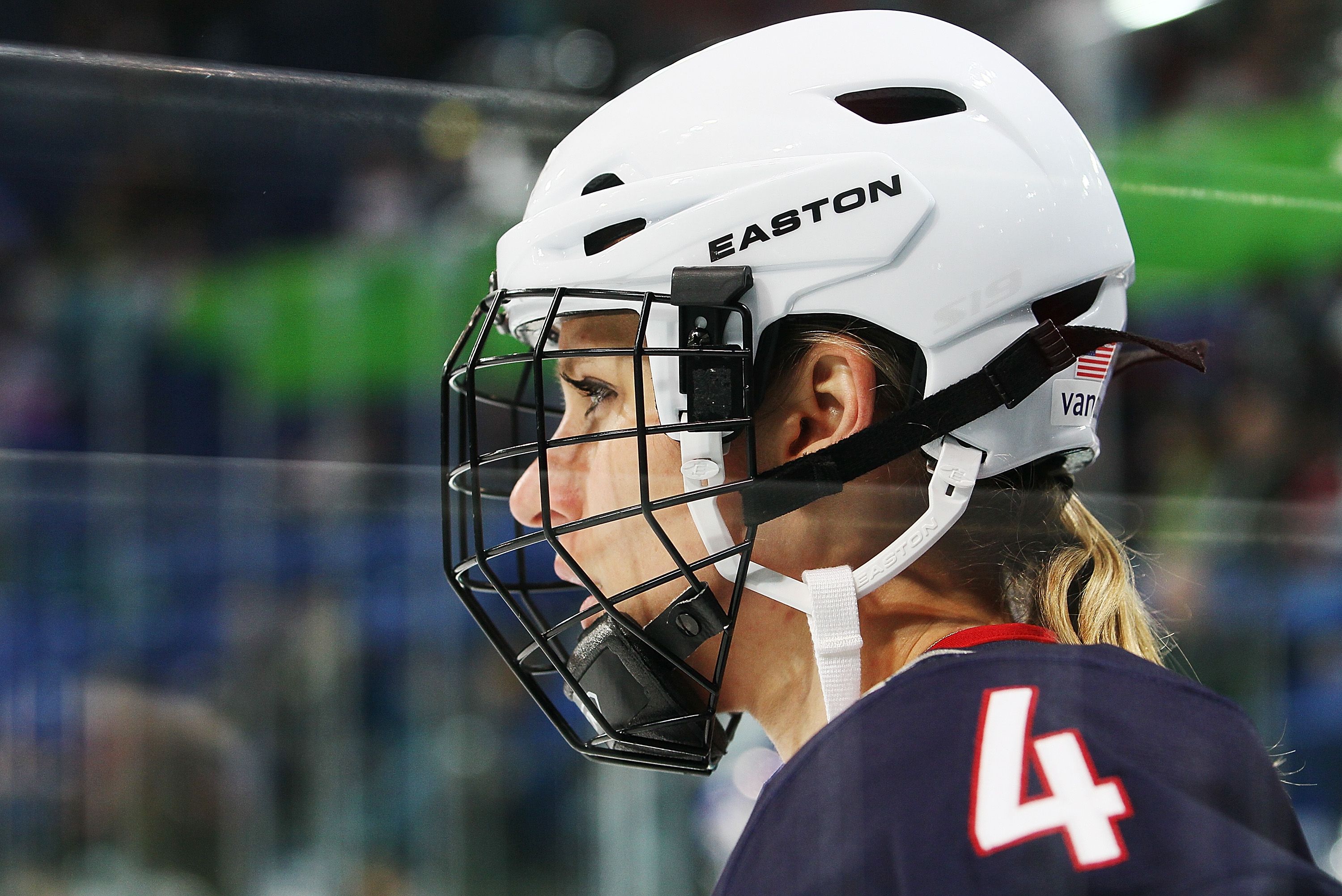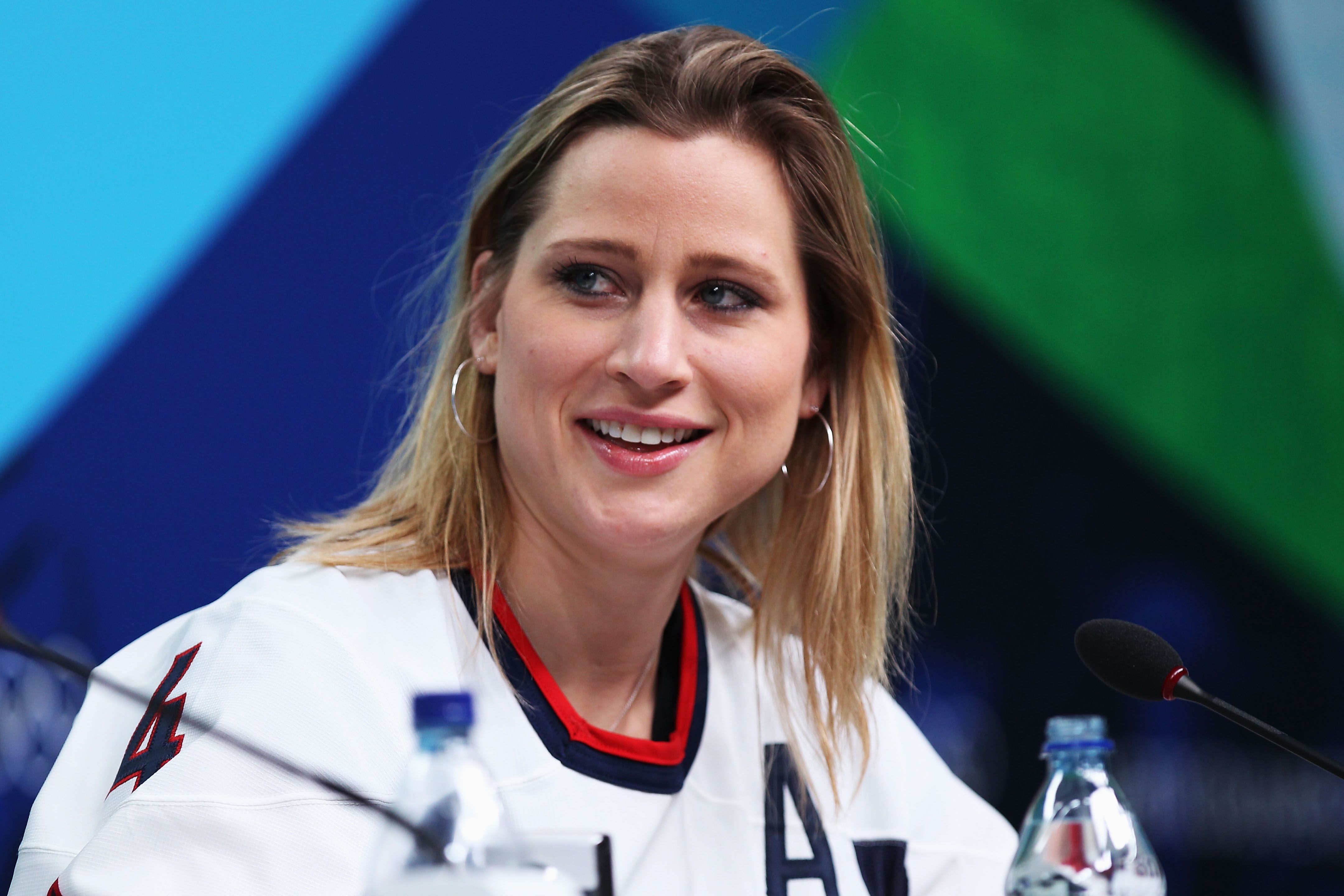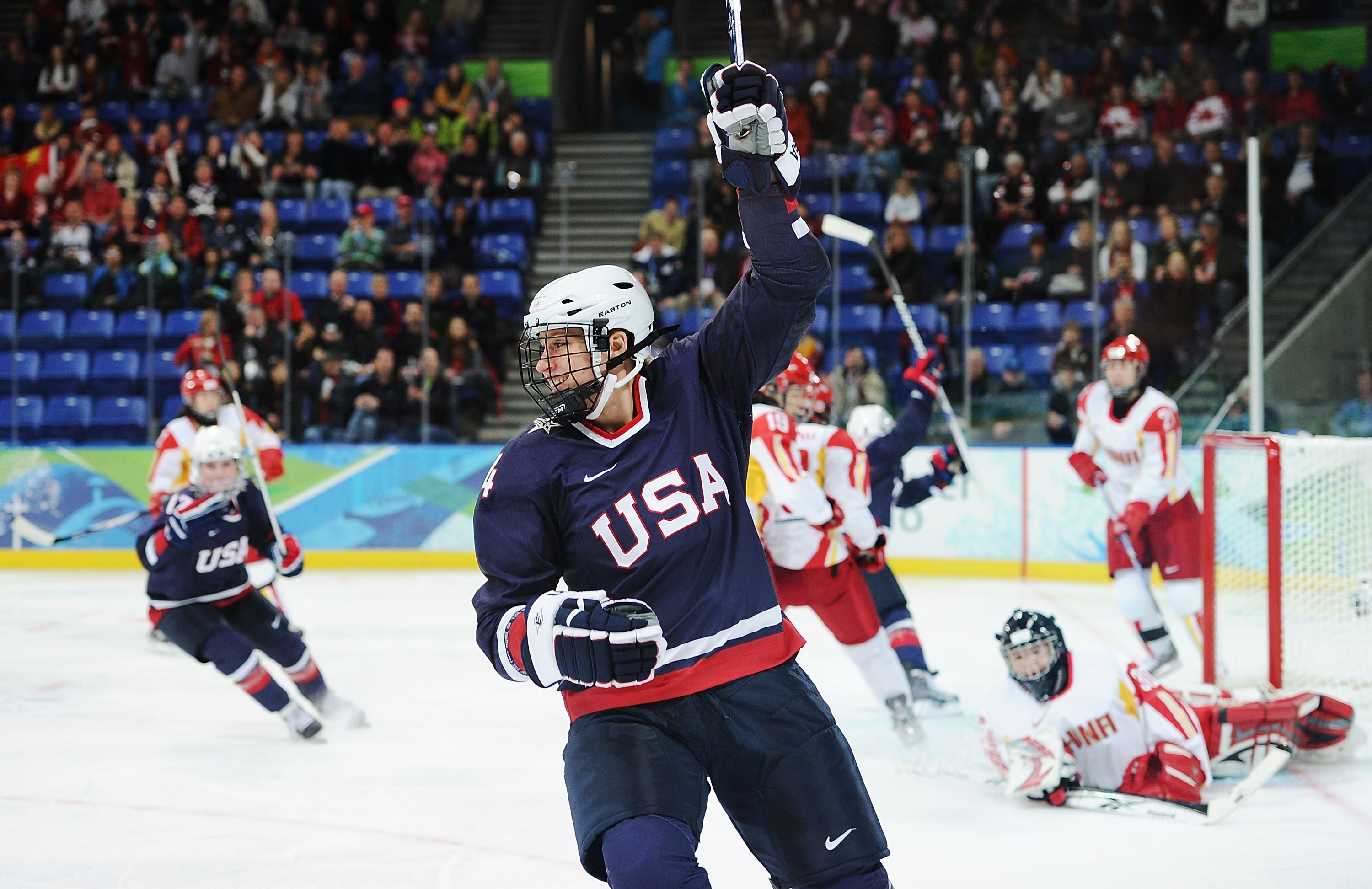The latest episode of the Gamechangers podcast featured ice hockey royalty Angela Ruggiero.
Since her emergence into the sport, she has shattered the glass ceiling. With opportunities against her from a young age, a determined young Ruggiero, who had a point to prove, completely changed the landscape of women's ice hockey.
Despite retiring more than ten years ago, she remains the USA's all-time leader, male or female, in international appearances with 256.
Across her glittering career on the ice, Ruggiero competed and medalled at four successive Winter Olympic Games, winning one gold, two silvers and a bronze.
She also competed in ten World Championships, winning four gold and six silver medals, tallying a magnificent 100 percent podium record at the tournament.
After her retirement, Ruggiero was honoured for her astonishing career by becoming just the fourth woman in history to be inducted into the Hockey Hall of Fame.
While her career is a spectacle to behold, her journey to the very top wasn't without its setbacks and as an ice hockey prodigy growing up in the 1980s, she experienced the chasm in gender equality when she was just nine years old.
Experiencing gender inequality from a young age
While she was growing up, Ruggiero’s parents wanted to keep her and her two siblings busy and active, which is how her younger brother experienced his first time on the ice at a local rink in Southern California.
When Ruggiero saw her brother walk through the door in his kit after his first session, she had already discovered an itch she absolutely had to scratch.
Her father took her down to the rink to inquire about whether she would be able to play on the team.
Ruggiero revealed there were very few hockey players in Southern California, so the ice rink welcomed her with open arms "even if it was a couple more girls and we were the only ones."
The future world champion and Olympic gold medallist described her first couple of years in the sport as "happy-go-lucky" — simply out on the ice to have fun. Little did she know that despite the looming setback, she would go on to become one of the most iconic names in the sport.
During her third season, Ruggiero and her brother tried out for an All-Star team that was heading out to Canada. Her brother made the team but she was bumped off the roster simply for being a girl.
This was the turning point in her mentality. Ruggiero had a reason to fight to show her worth.
"I was clearly good enough to be on the team. I wasn’t the best, but I was good enough," she reflected. "It was because I was a girl and they didn’t want the ponytail sticking out the back of the helmet at the tournament.
That to me was definitely one of the moments in my life that was extremely hard. Even as a nine-year-old — learning about gender discrimination and feeling it firsthand and having to make sense of it.
"But it triggered something in me. It motivated me. It gave me that spark, it gave me that focus that allowed me to have more intensity when I got out on the ice. I had this chip on my shoulder, something to prove — which looking back now is the best thing that could have ever happened.
"Every time I got on the ice after that, I had something to prove. I wasn't just coasting, happy go lucky anymore. It changed the way that I played."
Tackling inequality moving forward
Like the majority of sports, ice hockey has different rules and outlooks when it comes to the men's and women's game.
Ruggiero revealed that during her time as a member of the International Olympic Committee, she initiated a gender equality review in the sport she had adored and went on to dominate.
"I was curious [as to] why there are different rules, period, across all men's and women's sports," the four-time Olympian said. "Why don't we have the same exact rules? From the actual rules of play, to the equipment, to what you're wearing, to the funding."
Ruggiero explained how body checking, a manoeuvre used to separate a player from the puck, was taken out of the women's game in an attempt to "protect players from each other."
There are also different rules when it comes to face and head protection — while the women must wear face masks, the men are not required to. While this is a safety regulation that Ruggiero is pleased to have in place for female players, she has questioned the overall difference in rules for the two sides of the sport.
"We're actually aware now that there are differences and that these conversations are occurring and that the leadership is also getting pressure from the outside to say, 'why do women's volleyball shorts have to be a maximum length and men's have a minimum length?'
"Why do we have very different rules across the board? I'm encouraged to see international federations starting to have these conversations. I think it's in part, because there's more women now sitting in various leadership roles.
"So you have to have a strong leader, whether it's a man or a woman that is willing to change the status quo or at least be open to these discrepancies in sport."
Ruggiero's legacy isn't limited to her achievements on the ice. As well as her historic sporting career, she is an incredible advocate for gender equality and was listed in Forbes' 25 Most Powerful Women in Sport.
This article was produced in partnership with The Game Changers podcast, which is supported by Sport England. You can listen to the full episode with Angela Ruggiero here.



















